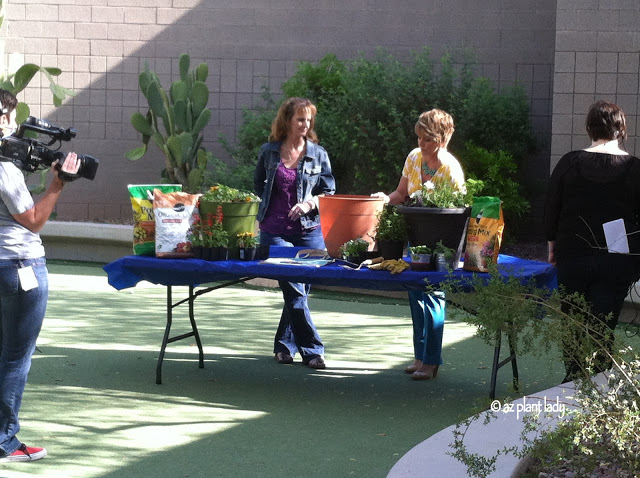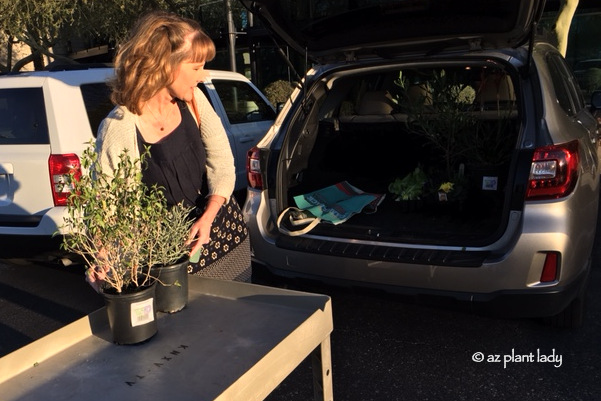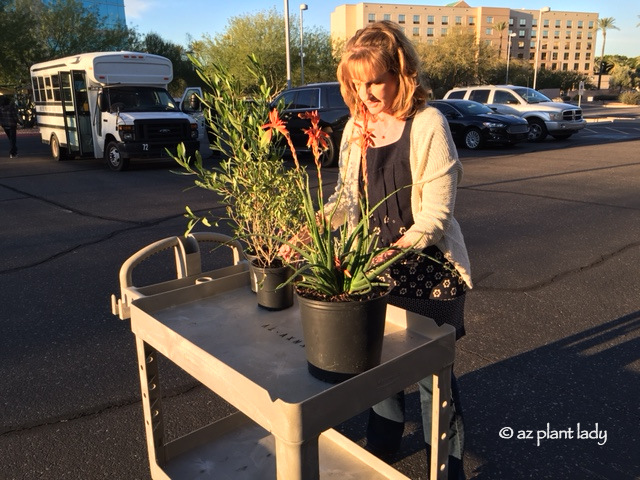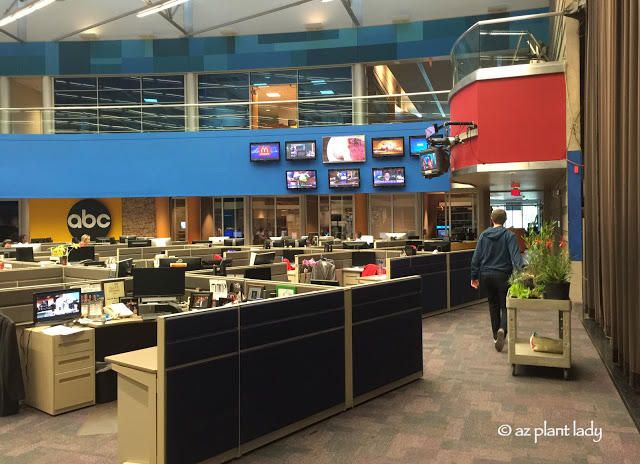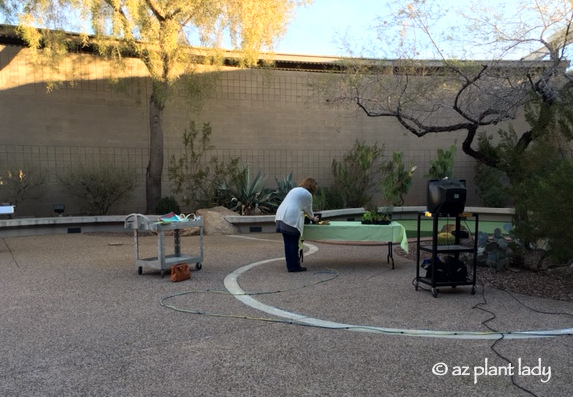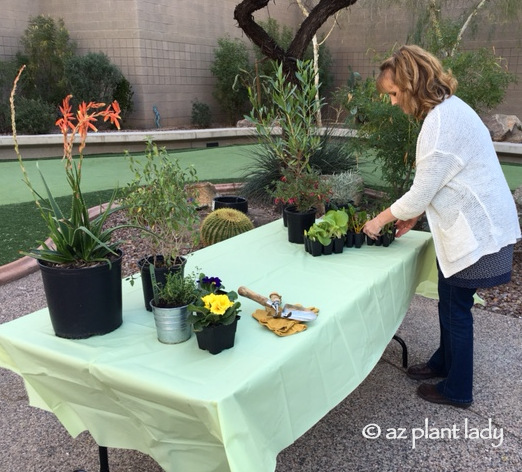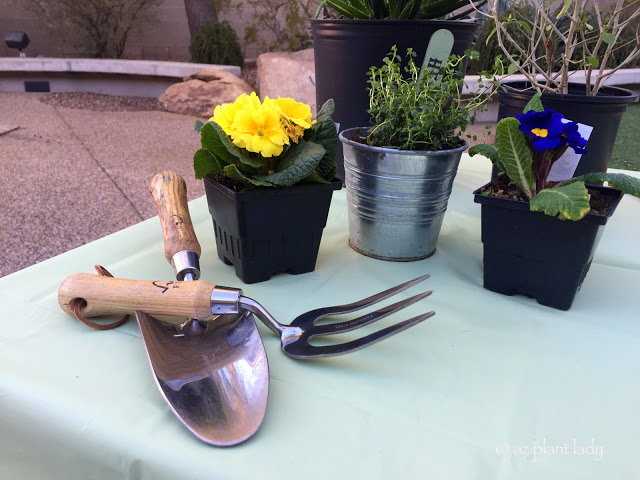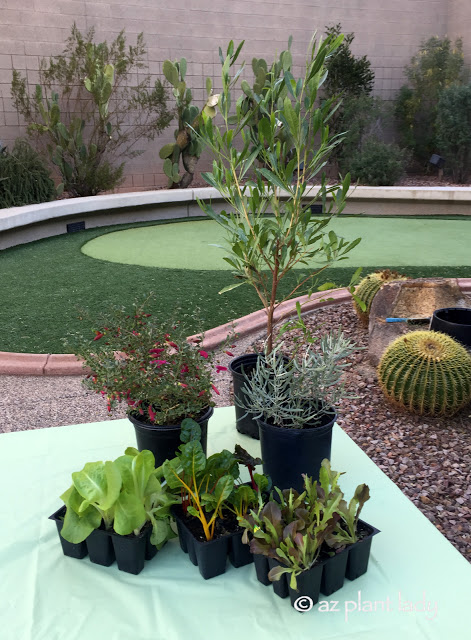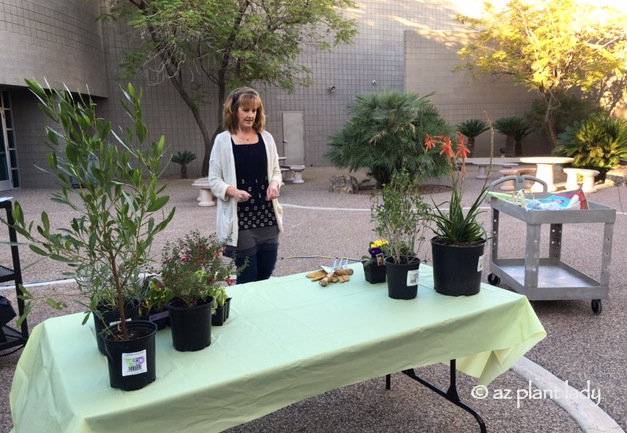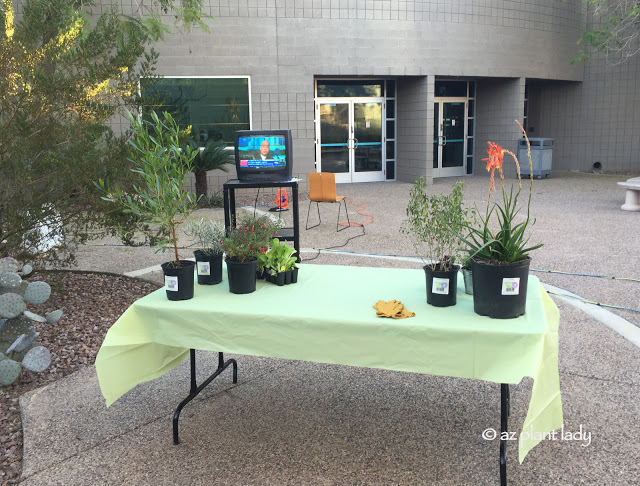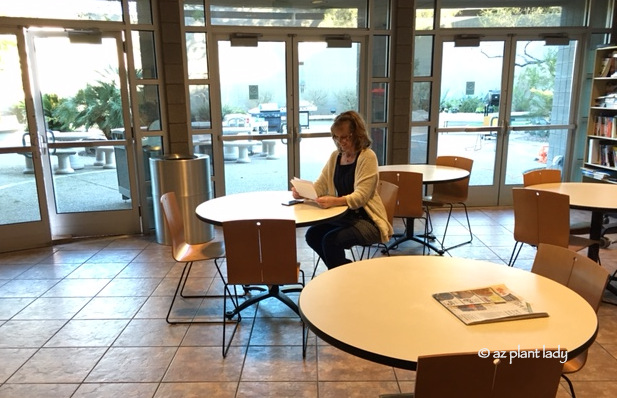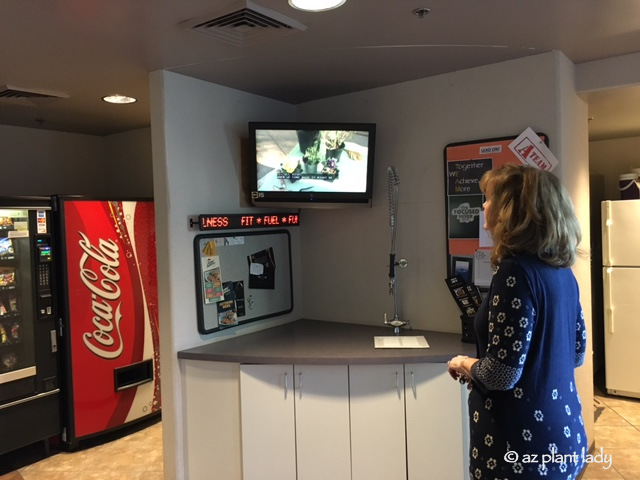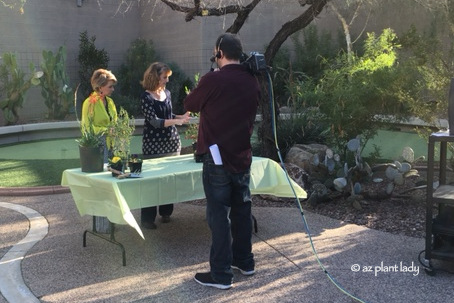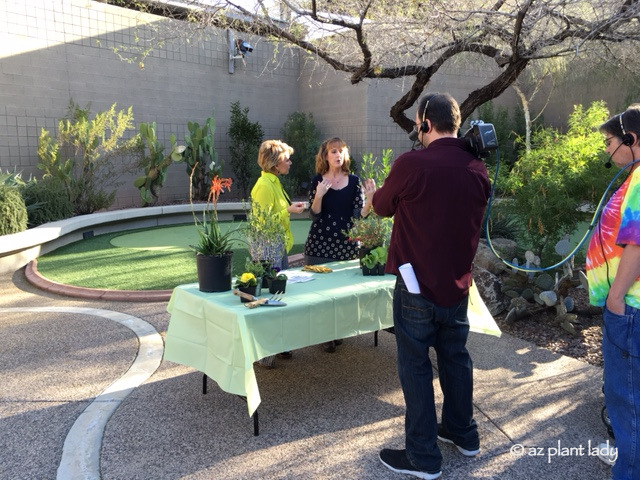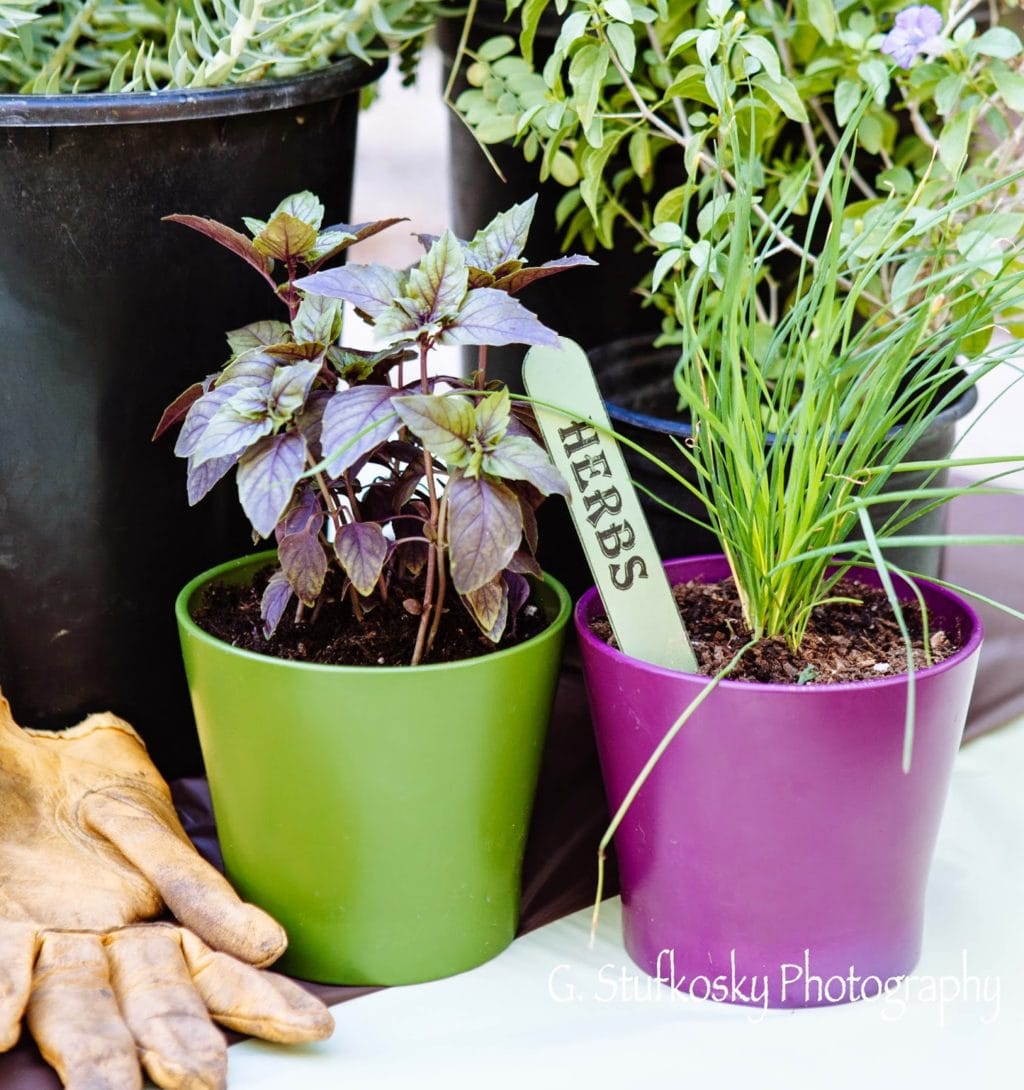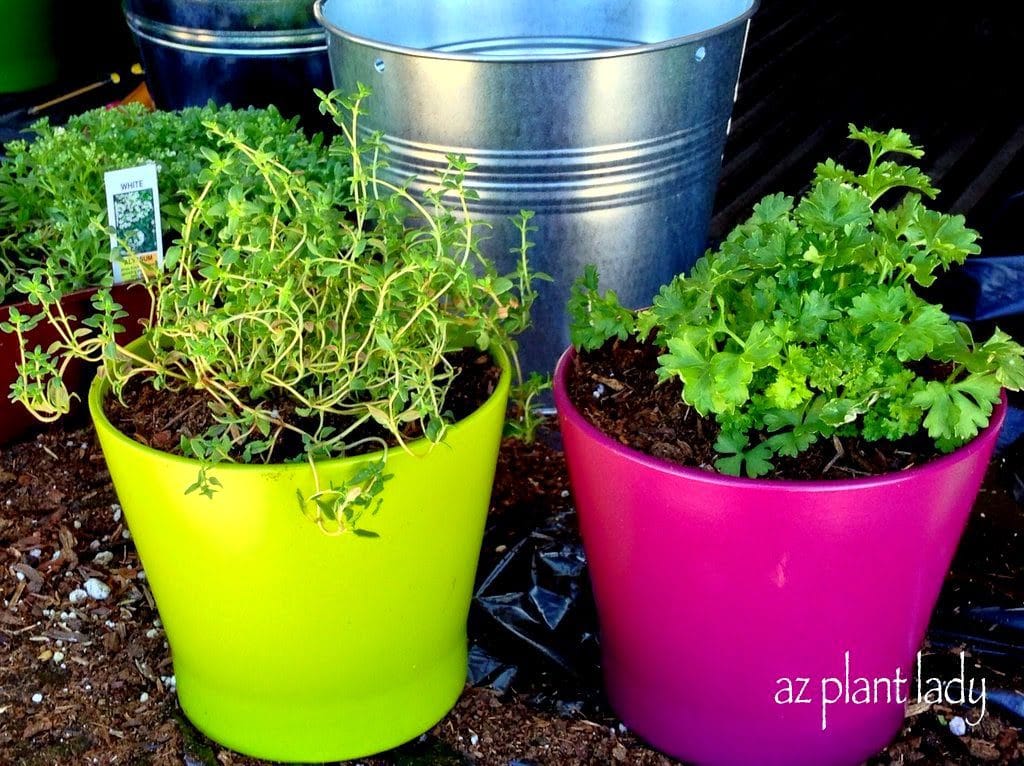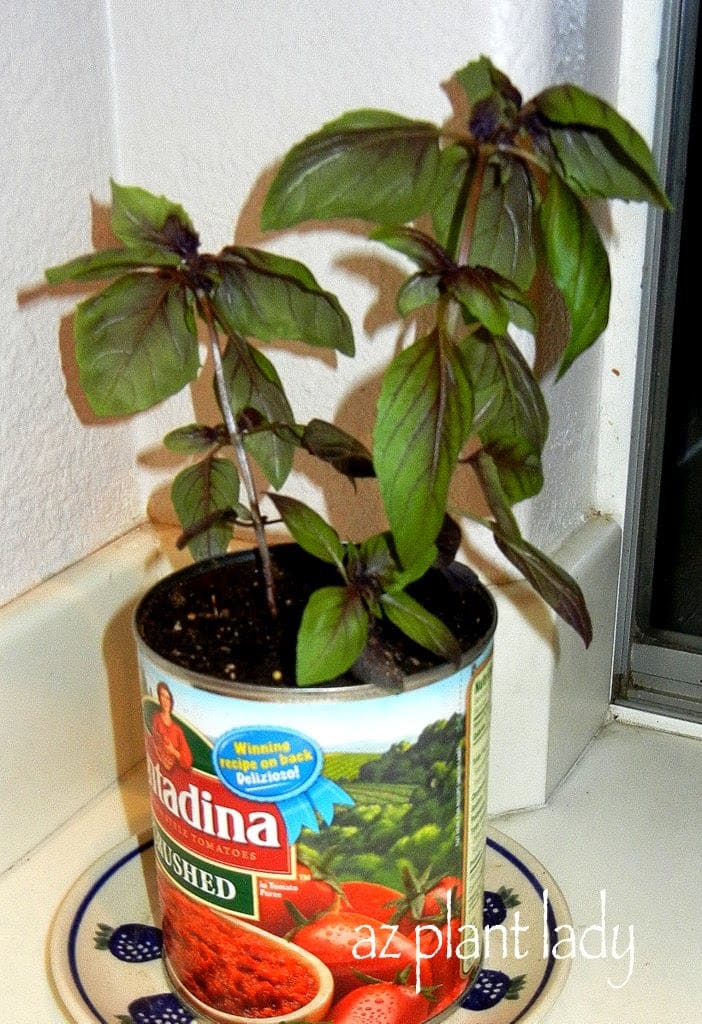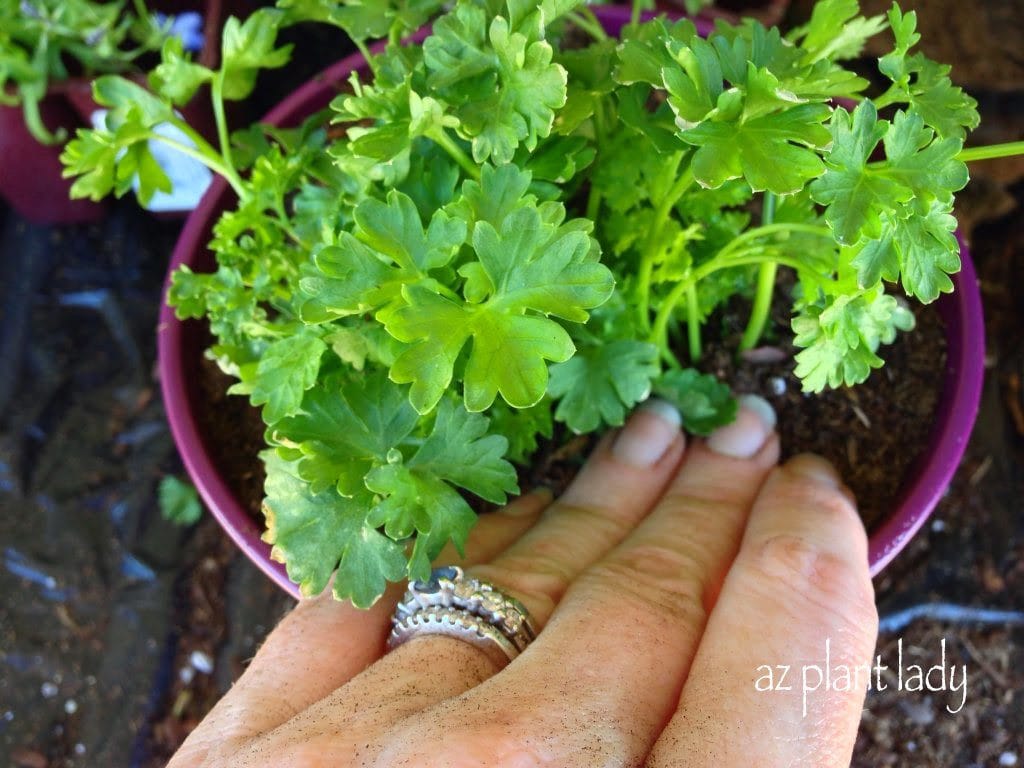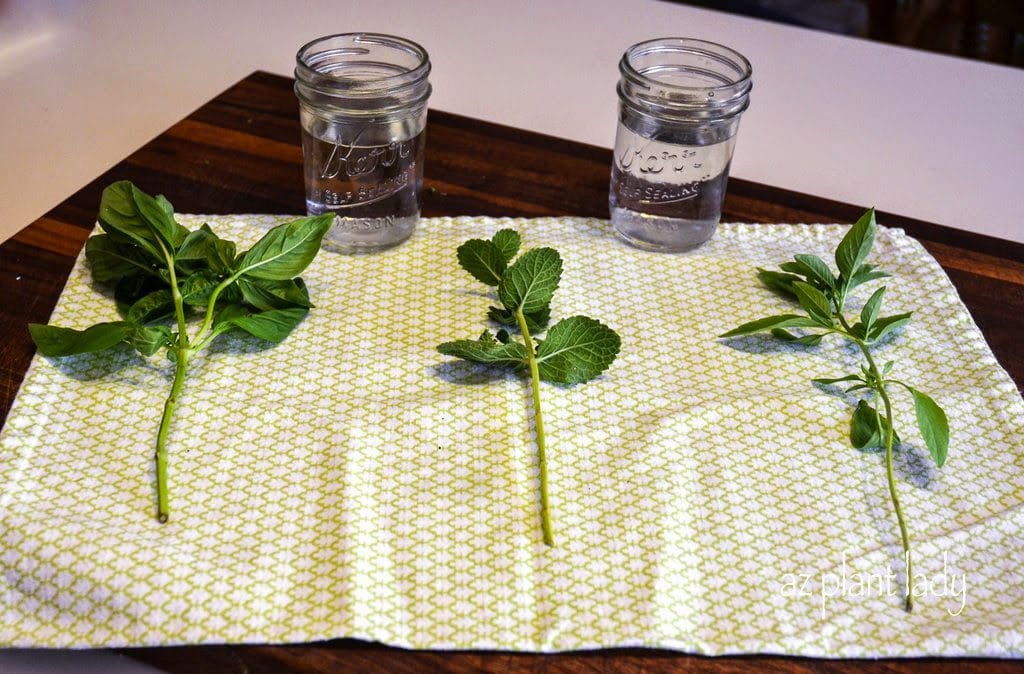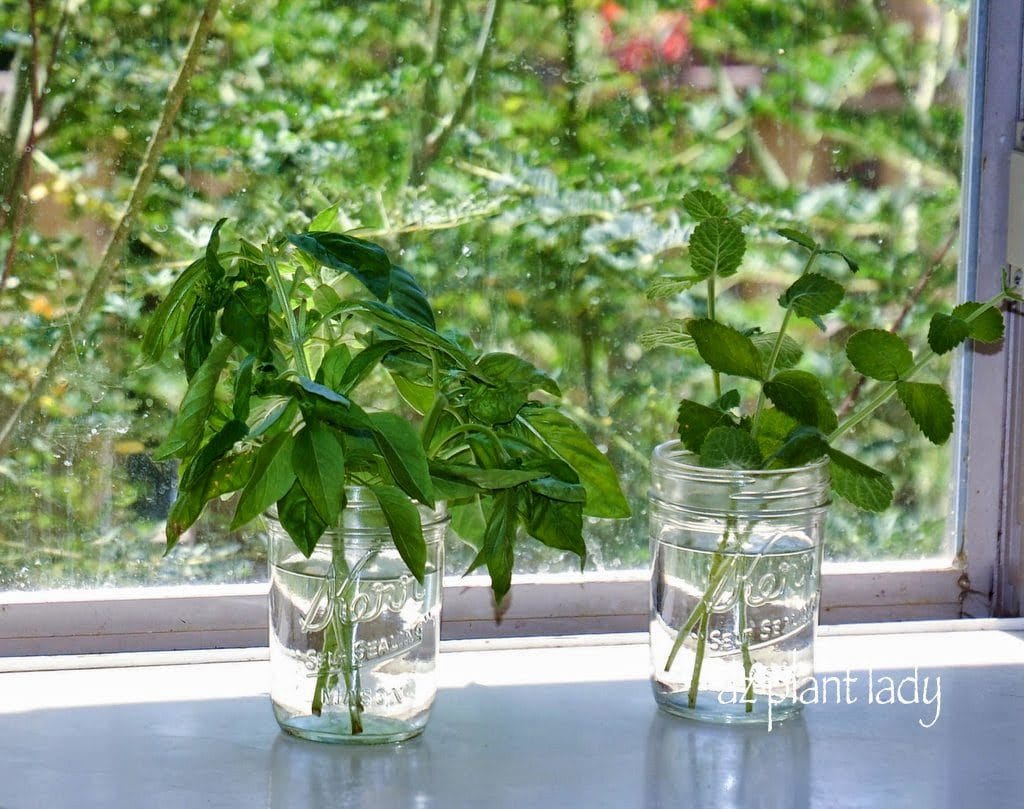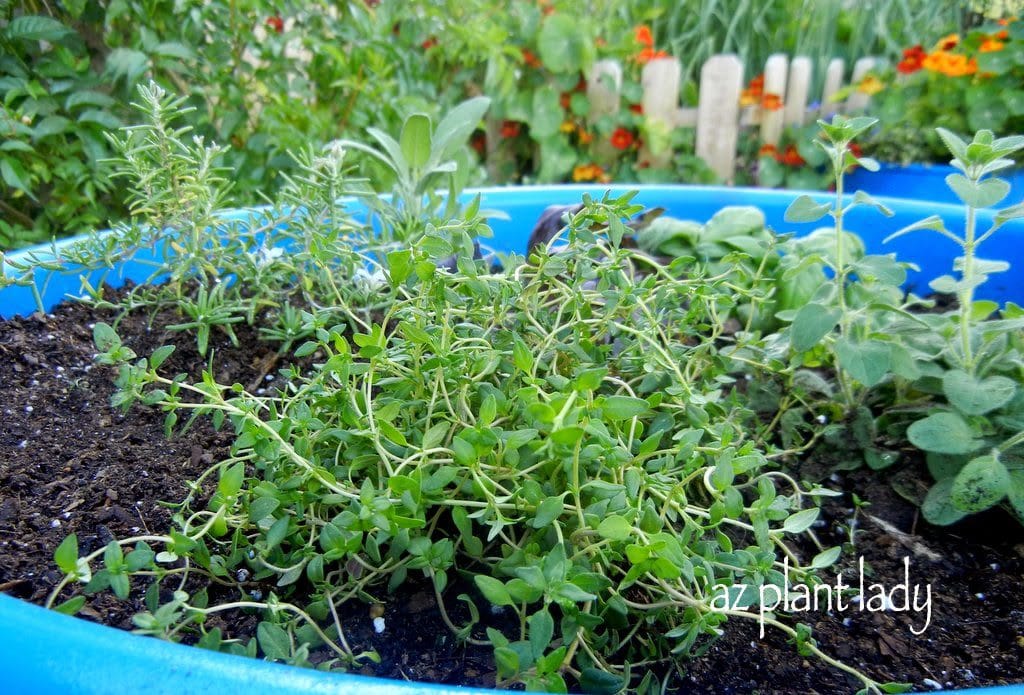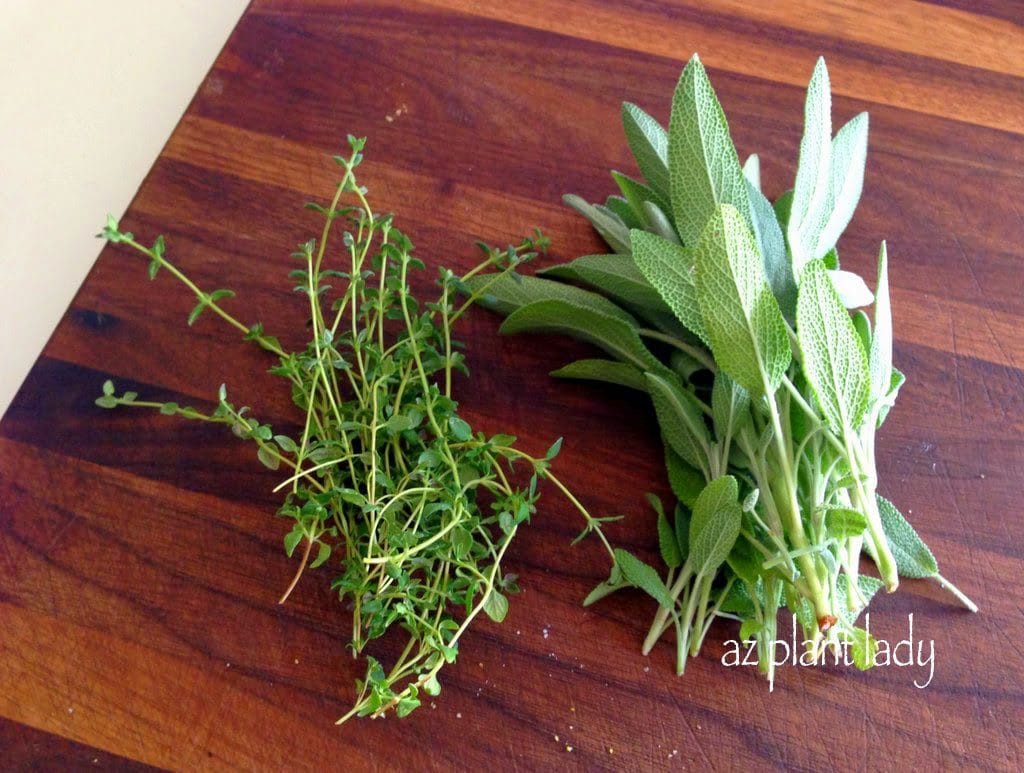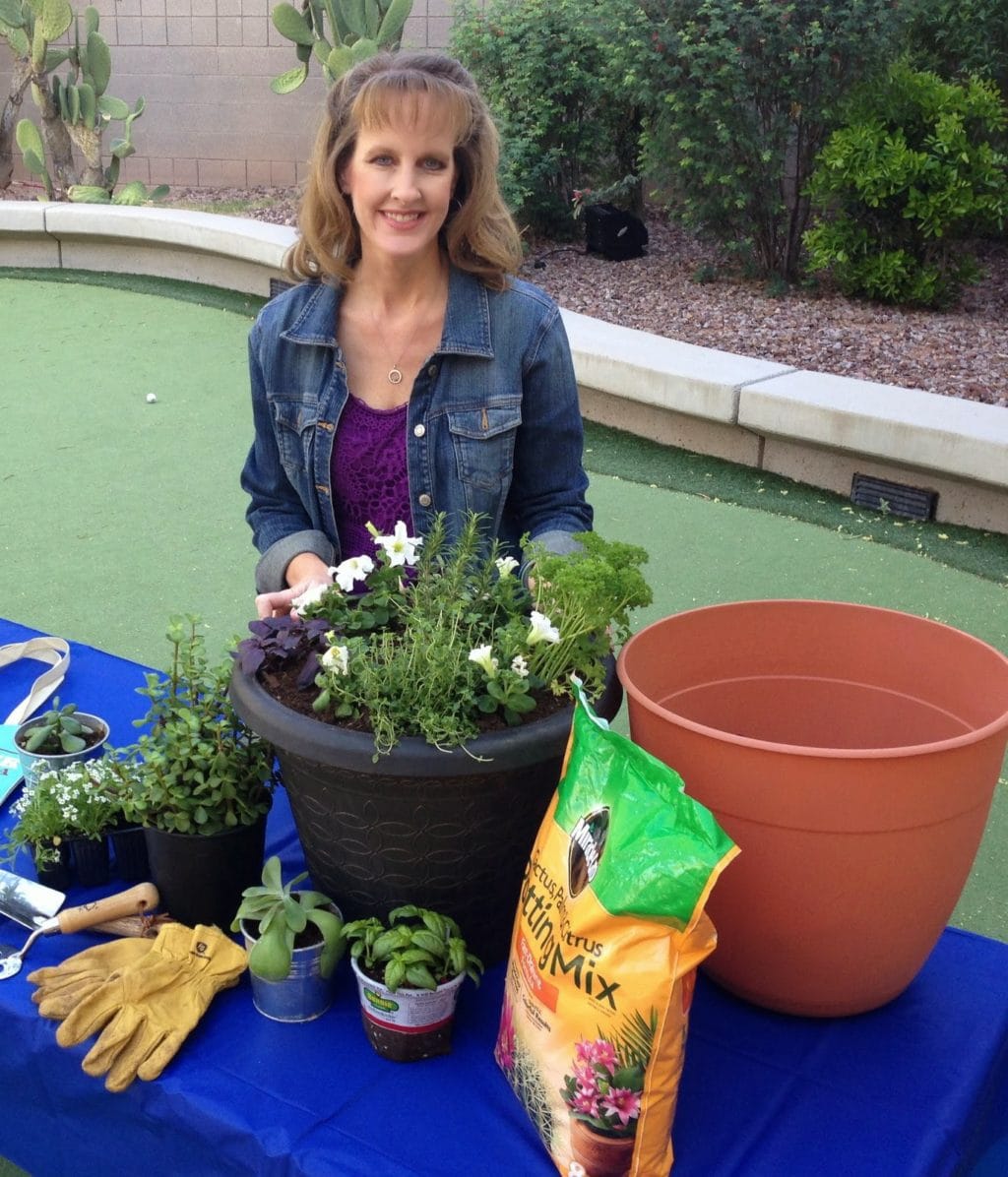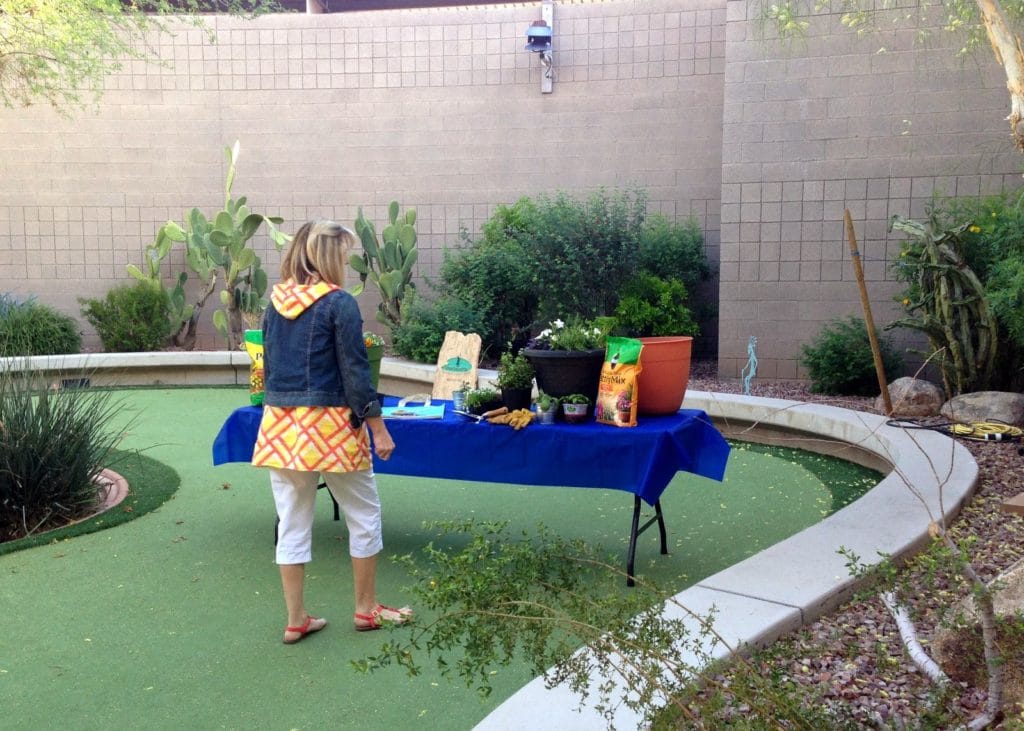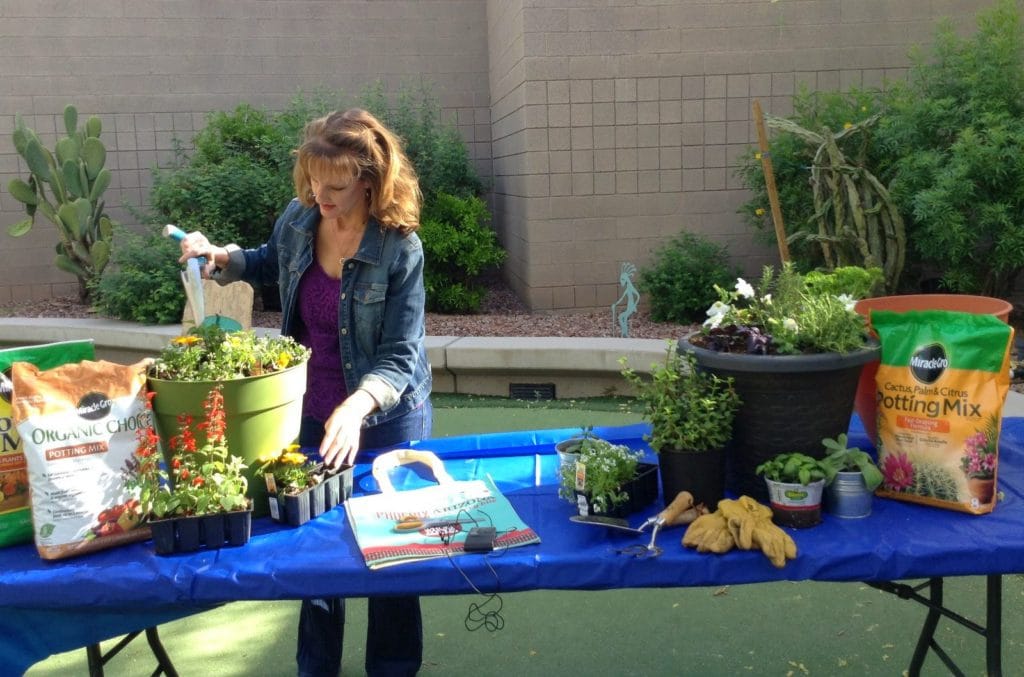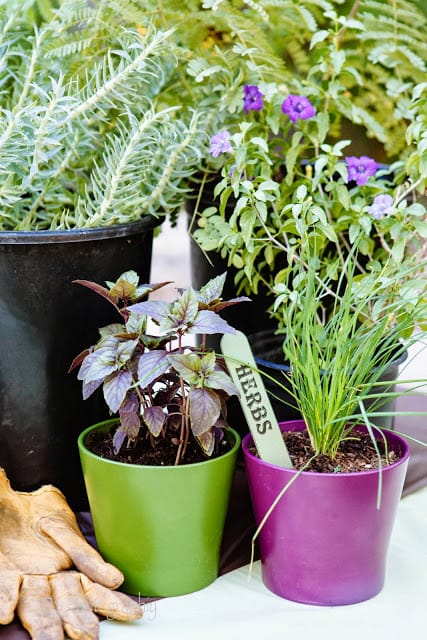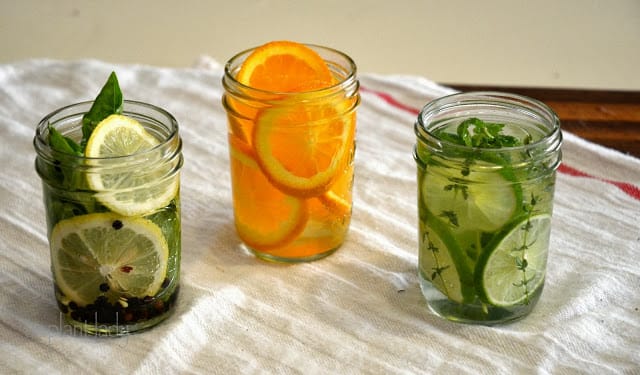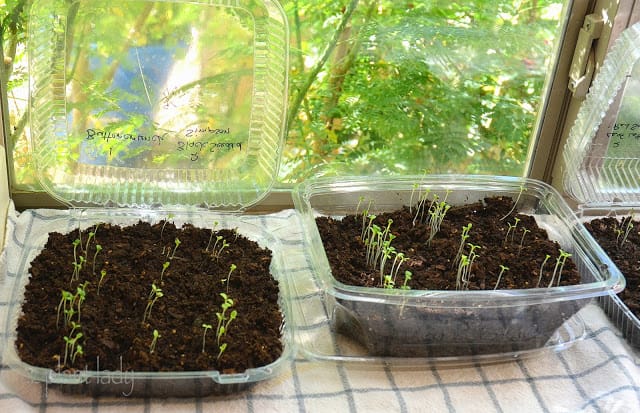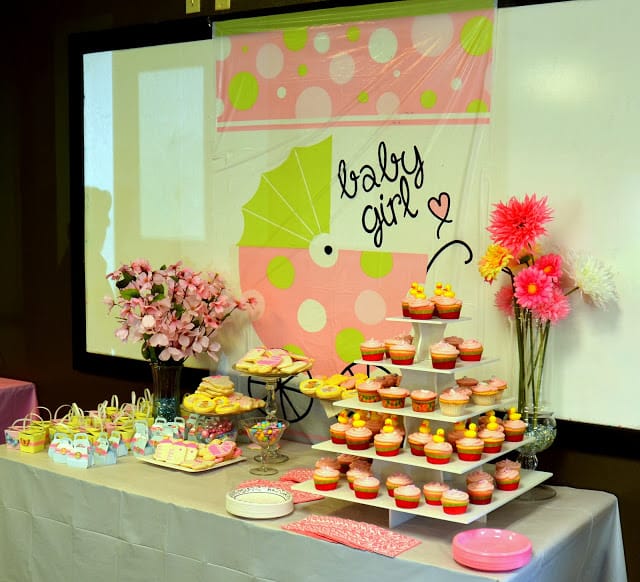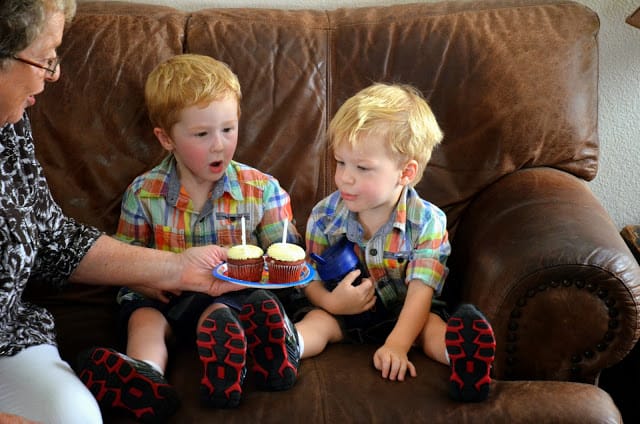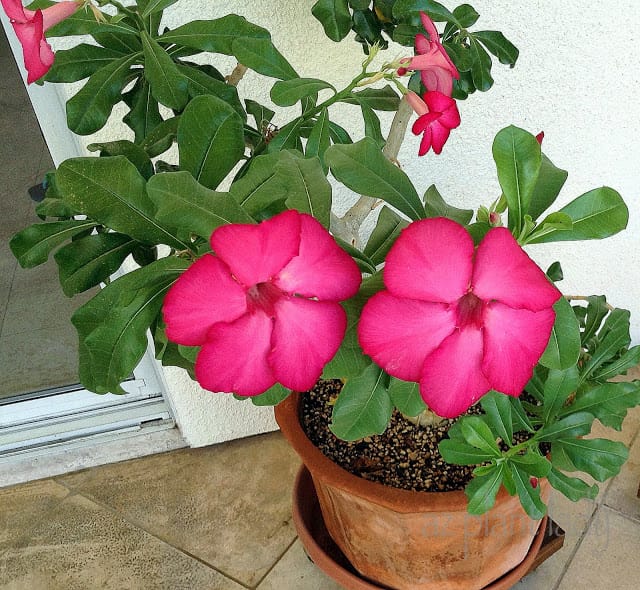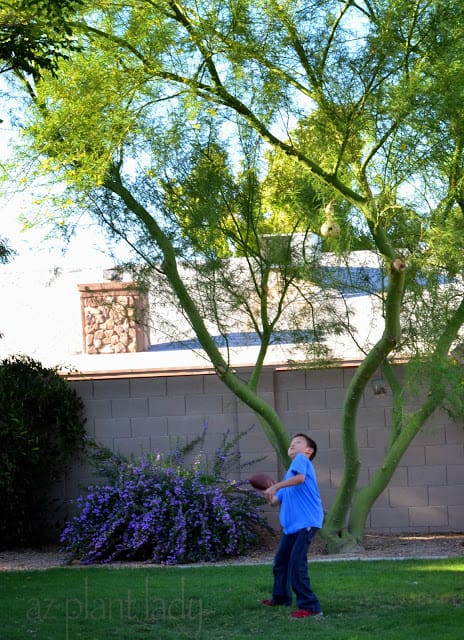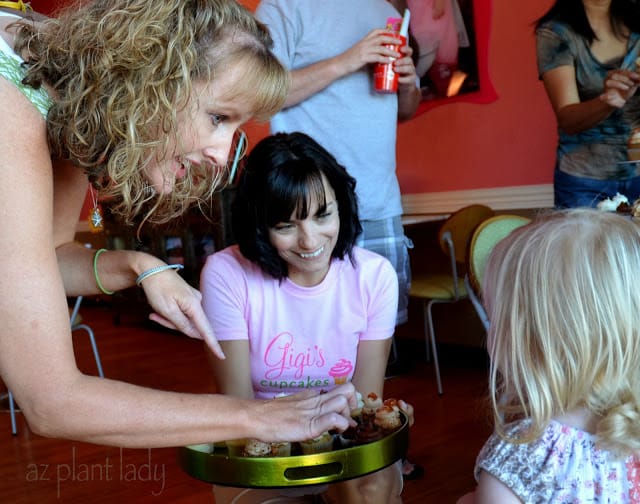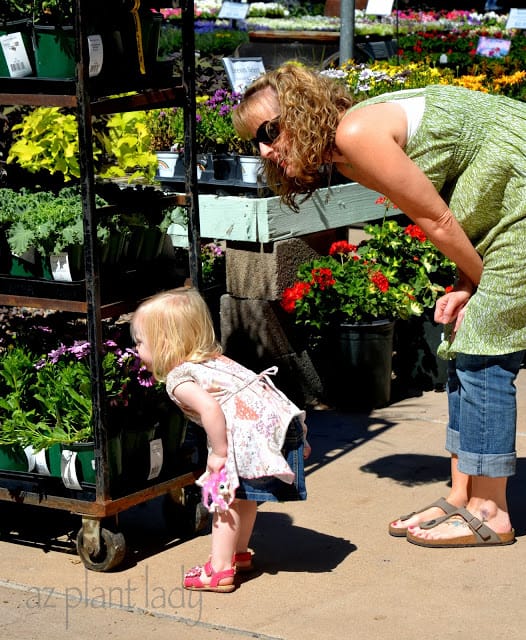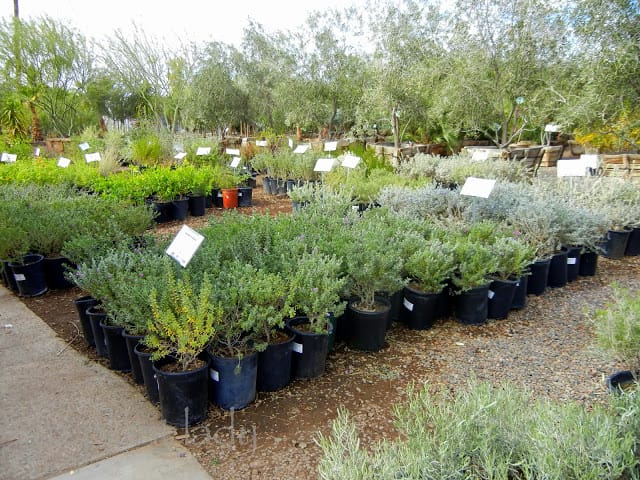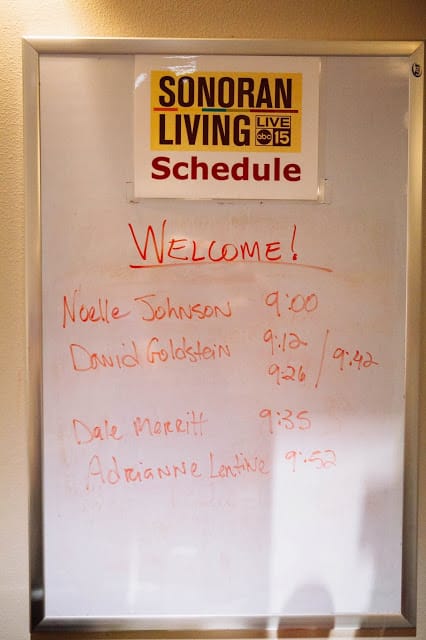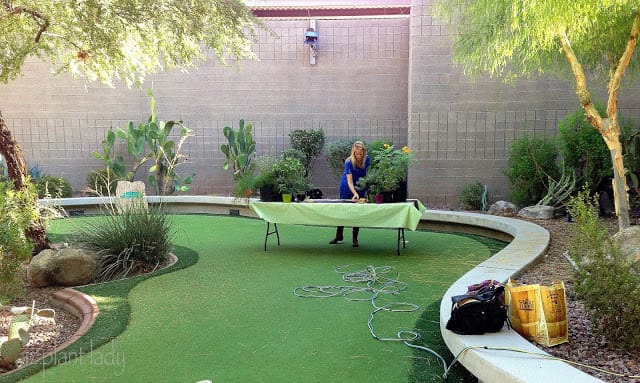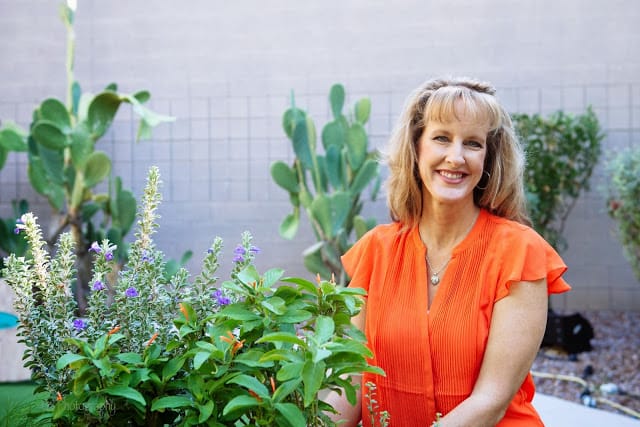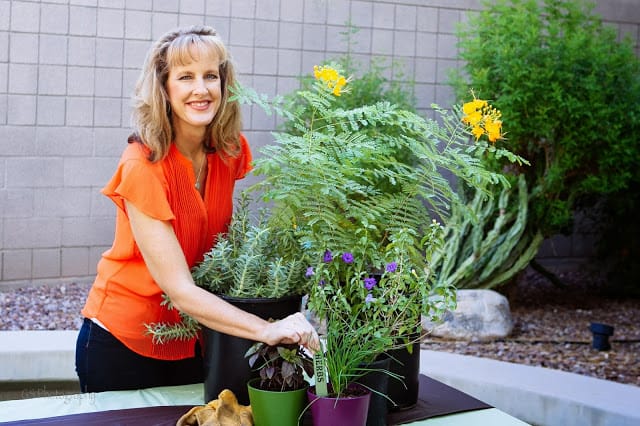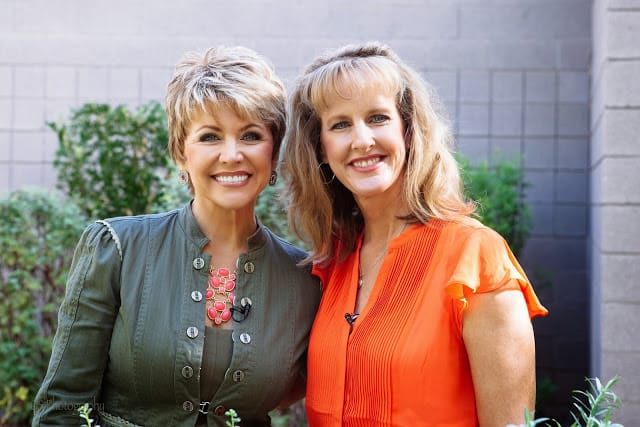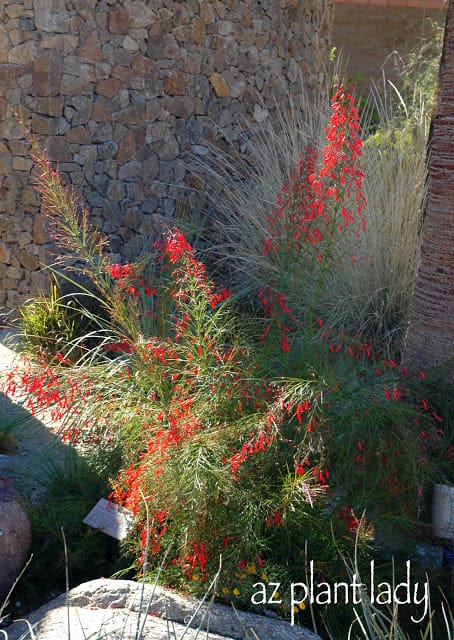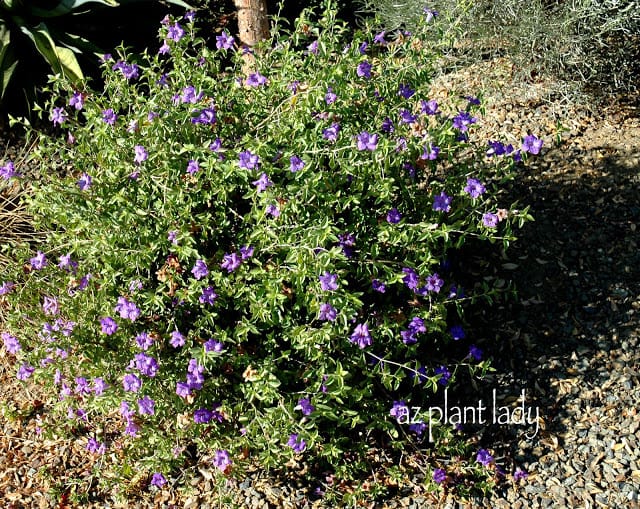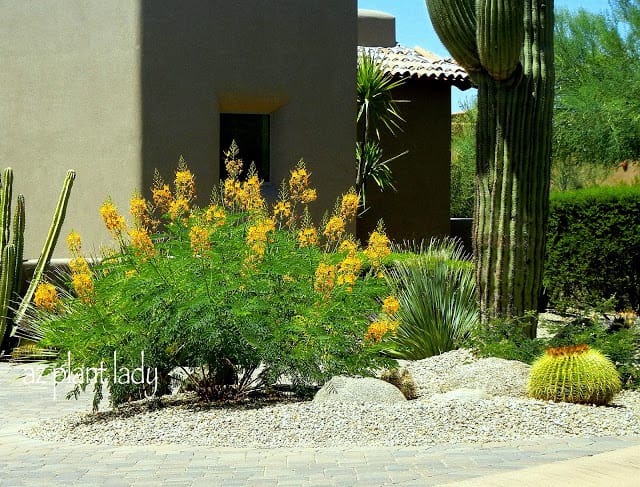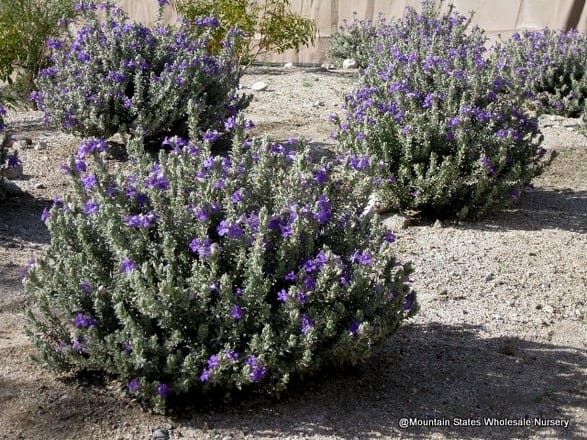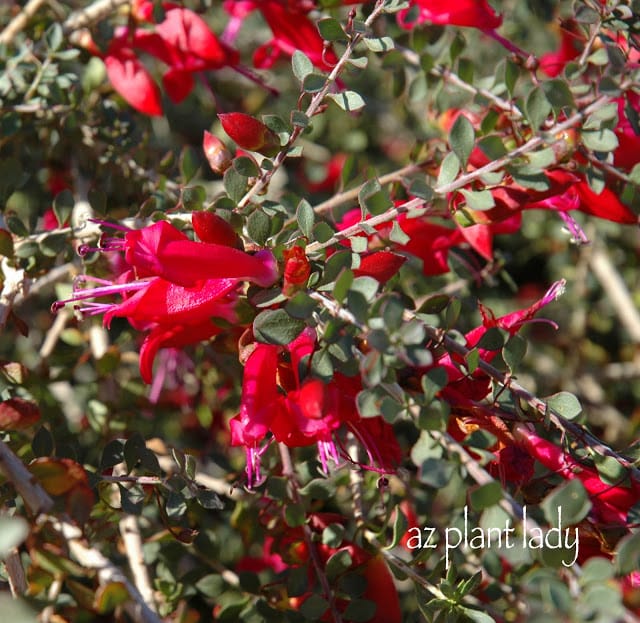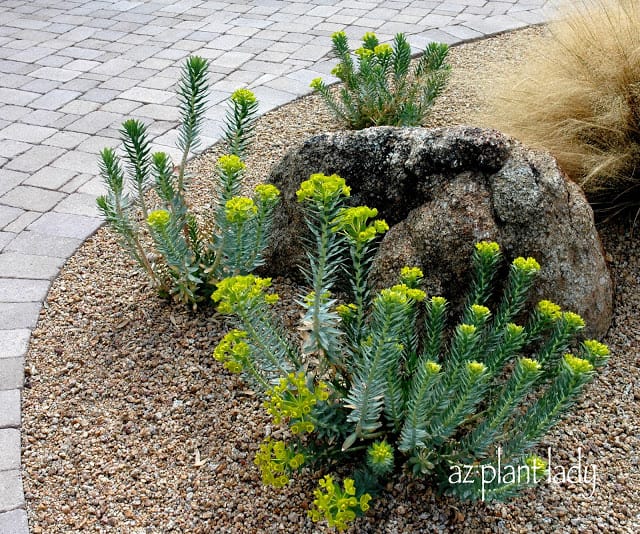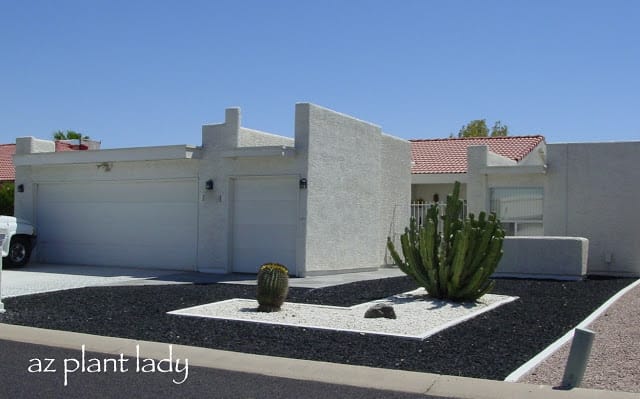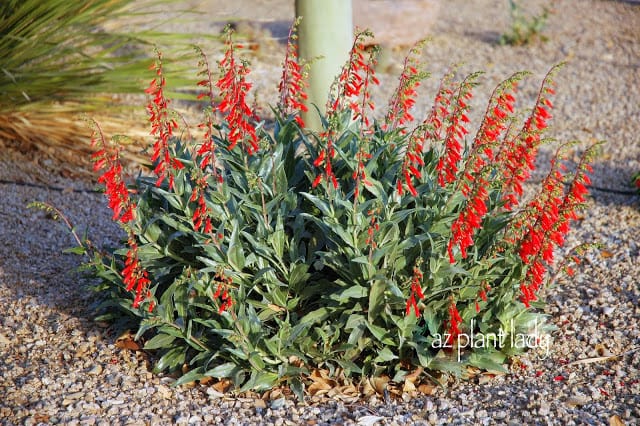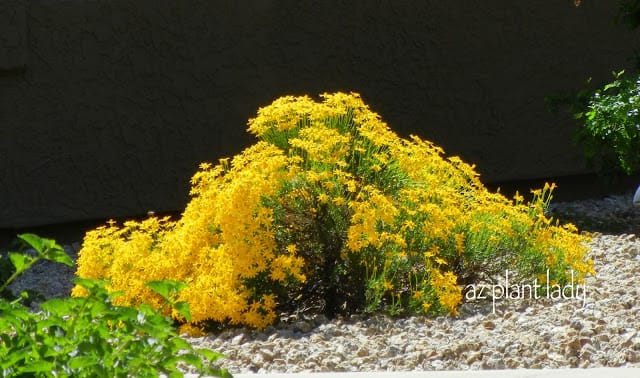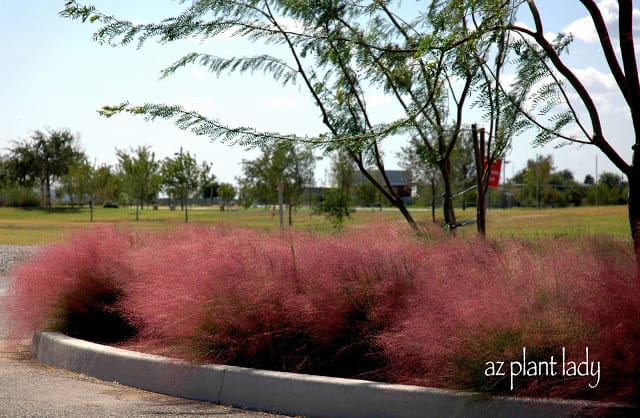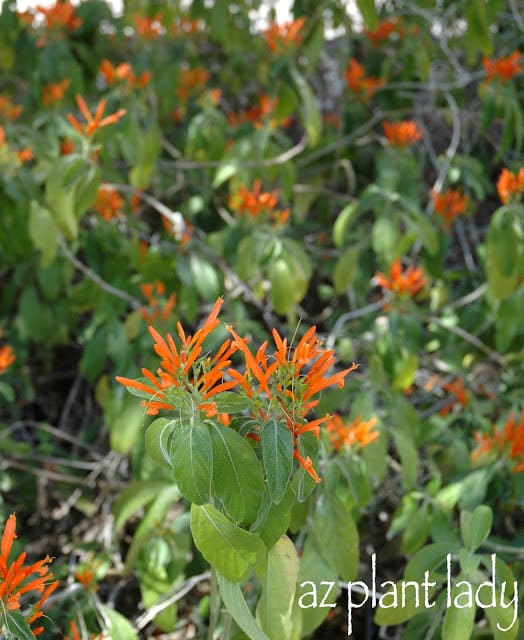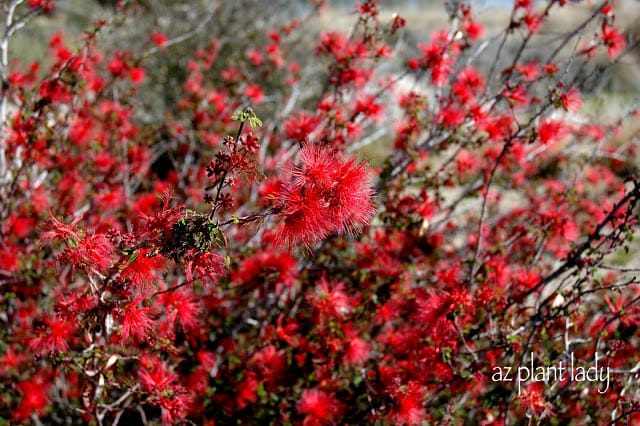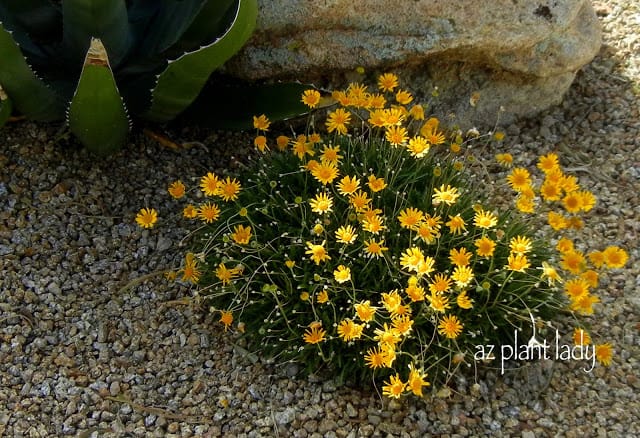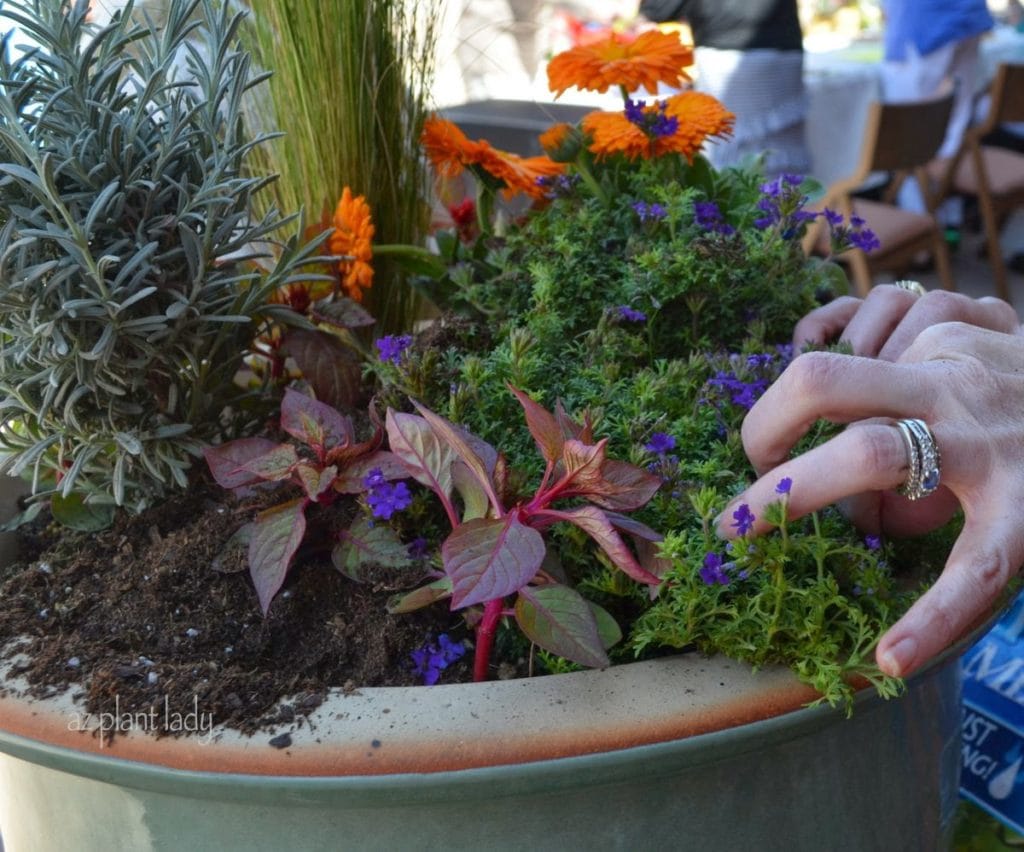
Container Gardening: Bringing Life to Your Desert Garden
Spring Transitions in Container Gardening
Spring in the desert brings a flurry of activity out in the garden – much of it involving container gardening. As the season changes, it’s time to rejuvenate your containers and infuse new life into your outdoor space.
As they say, in late spring, it’s “out with the old and in with the new.” In the desert garden, it’s when cool-season flowering annuals are traded out for those that can handle the hot temperatures of summer.
Embracing the Heat-Resistant Annuals
Examples of cool-season annuals are pansies, petunias, and snapdragons, which are grown fall through spring. BUT, they won’t survive hot, desert summers. So, in late April, it’s time to plant flowering annuals that can take the heat. My favorites include angelonia, ‘Blue Victoria’ salvia, and vinca.
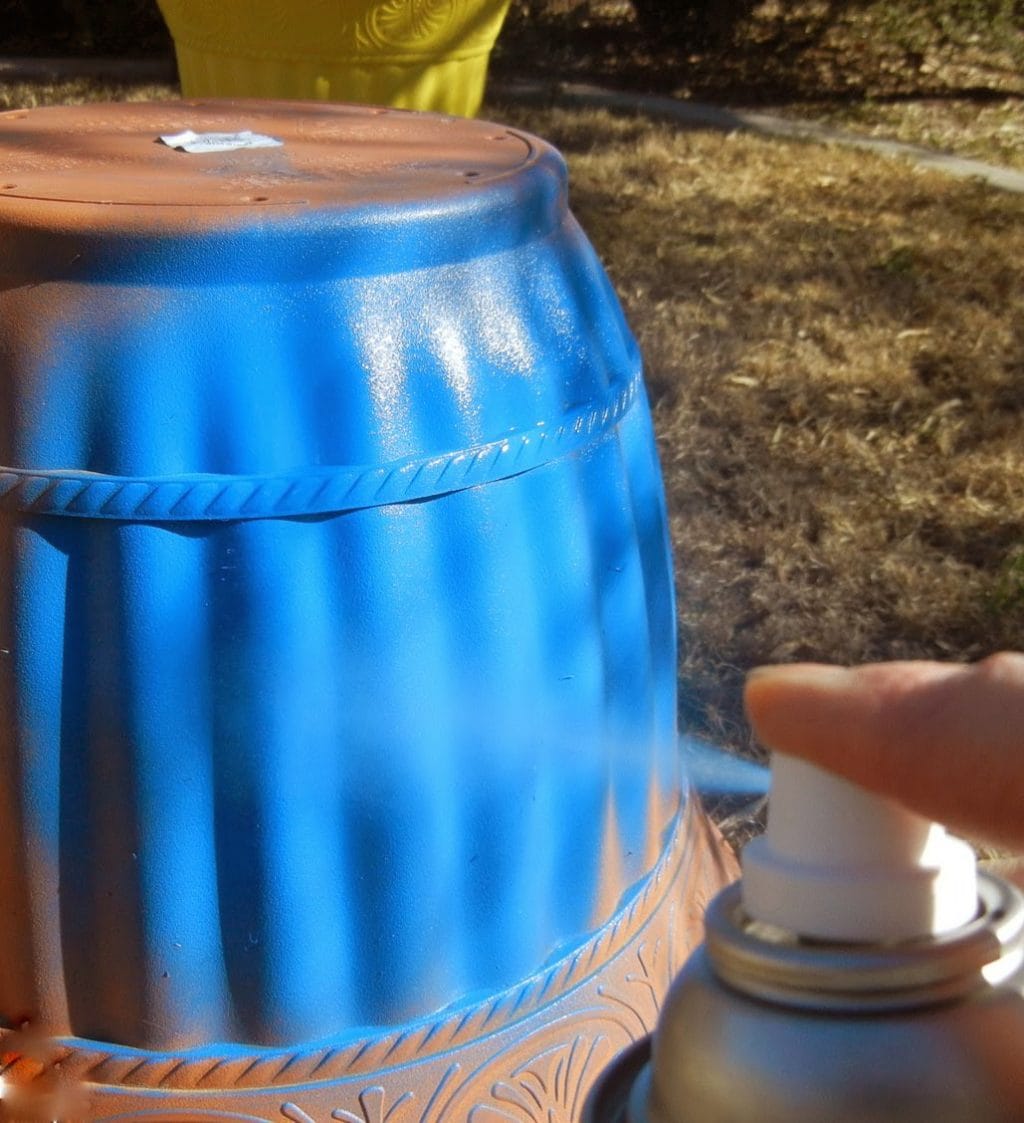
Beyond Blossoms: Creative Container Gardening Ideas
While flowers remain a popular choice for container gardening, there’s a world of possibilities to explore with growing plants in containers. Here are some creative ideas to elevate your container gardening game:
1. Colorful Containers
Give your containers a vibrant makeover by painting them in eye-catching colors. Elevate the aesthetics of your garden by transforming inexpensive plastic containers into stylish focal points with a simple coat of paint.
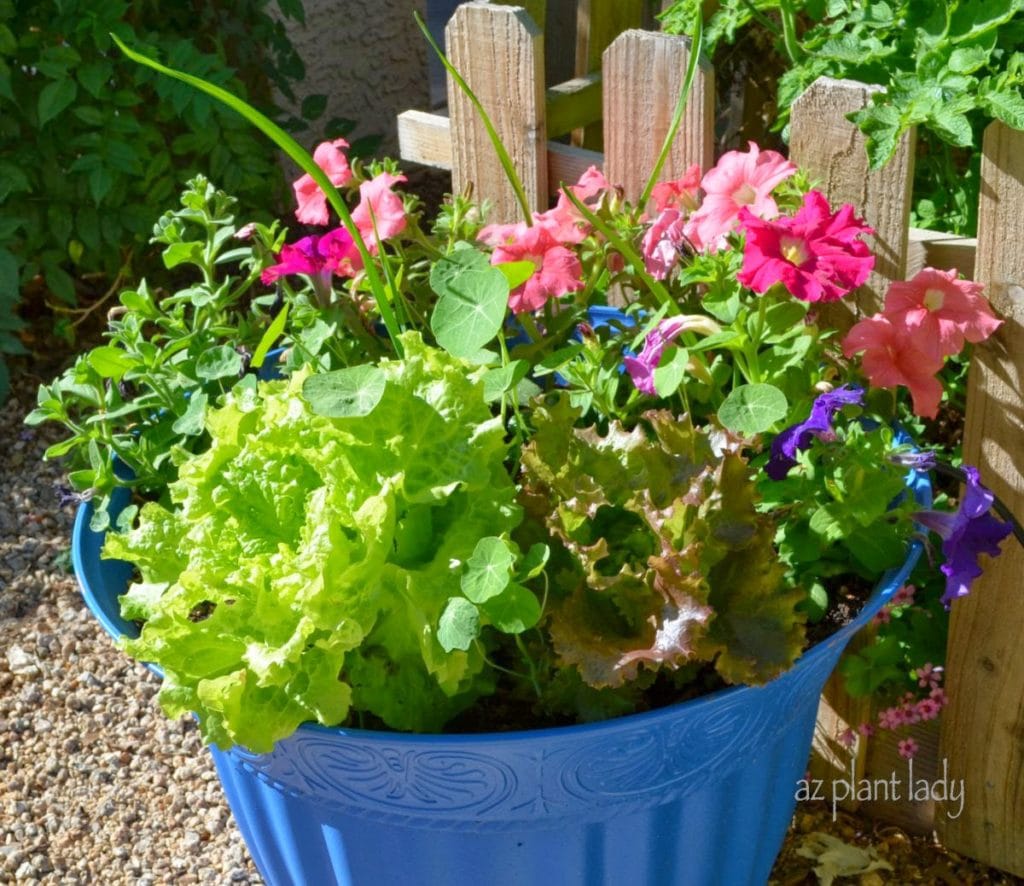
Leaf lettuce and garlic grow along with flowering petunias.
2. Edible Delights
Did you know that you can grow vegetables in pots? I love doing this in my garden. In the fall, I plant leaf lettuce, spinach, and garlic in my large pots alongside flowering petunias. When March arrives, I like to add basil, peppers along with annuals.
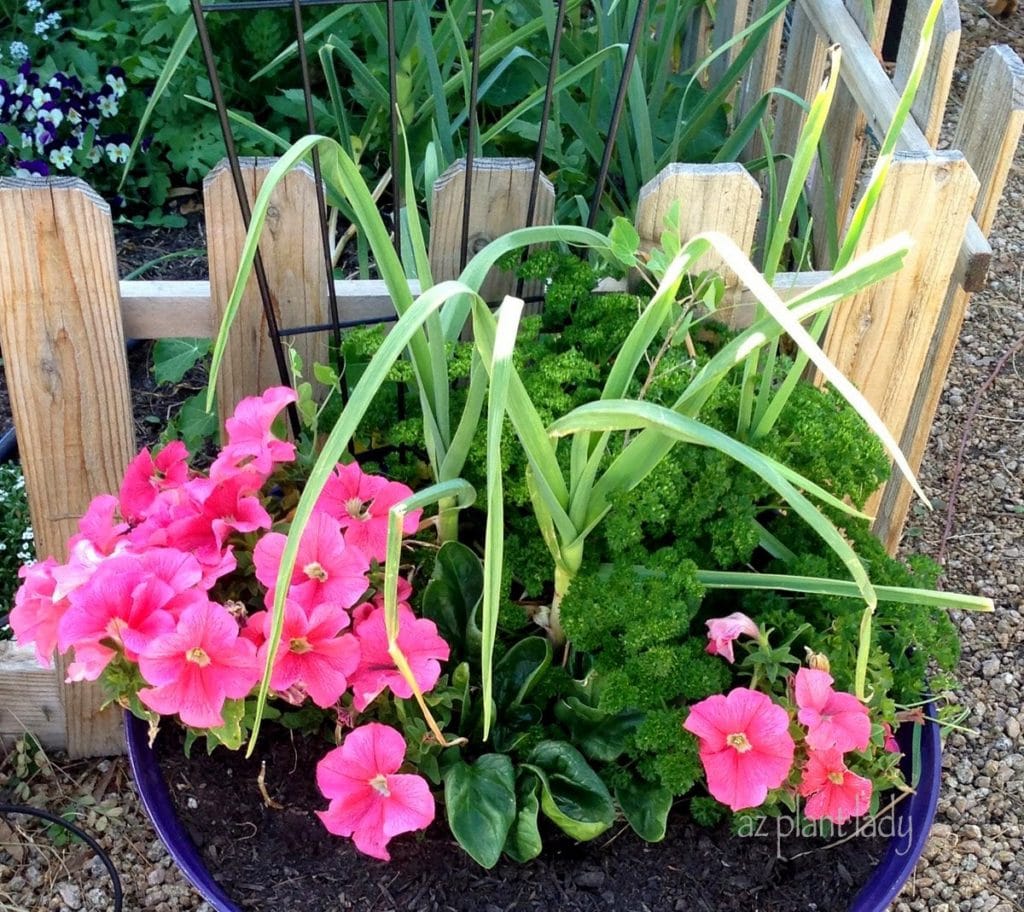
Winter container garden with spinach, parsley and garlic growing with pink petunias.
For pots, I recommend you use a potting mix, which is specially formulated for containers and holds just the right amount of moisture. Container plants need to be fertilized. You can use a slow-release fertilizer or a liquid fertilizer of your choice.
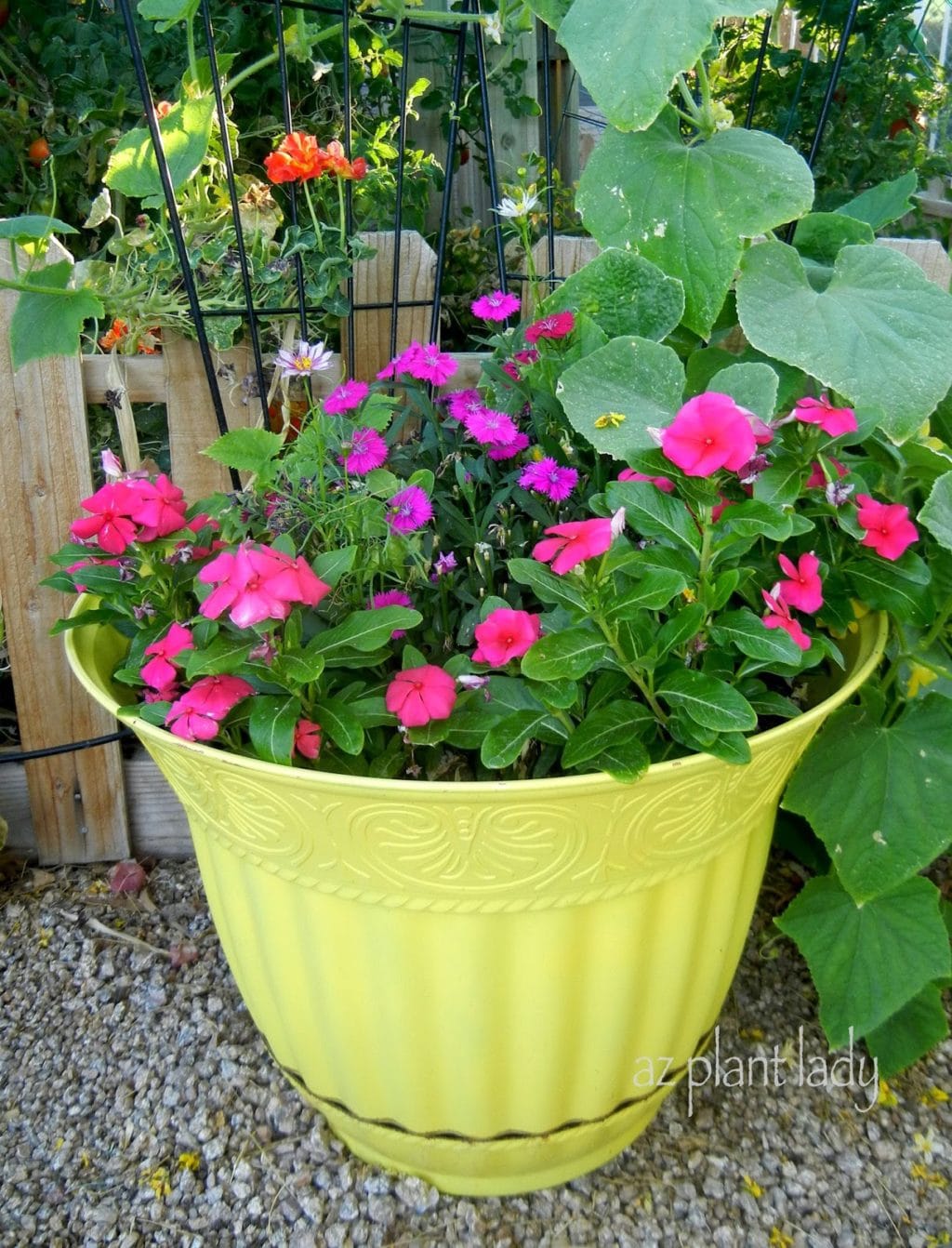
Cucumbers growing with vinca and dianthus.
3. Seasonal Vegetable Pairings
In spring, vegetables such as cucumbers, bush beans, and even zucchini can grow in containers paired with flowers.
*If you would like to try growing edible containers, click here for more info.
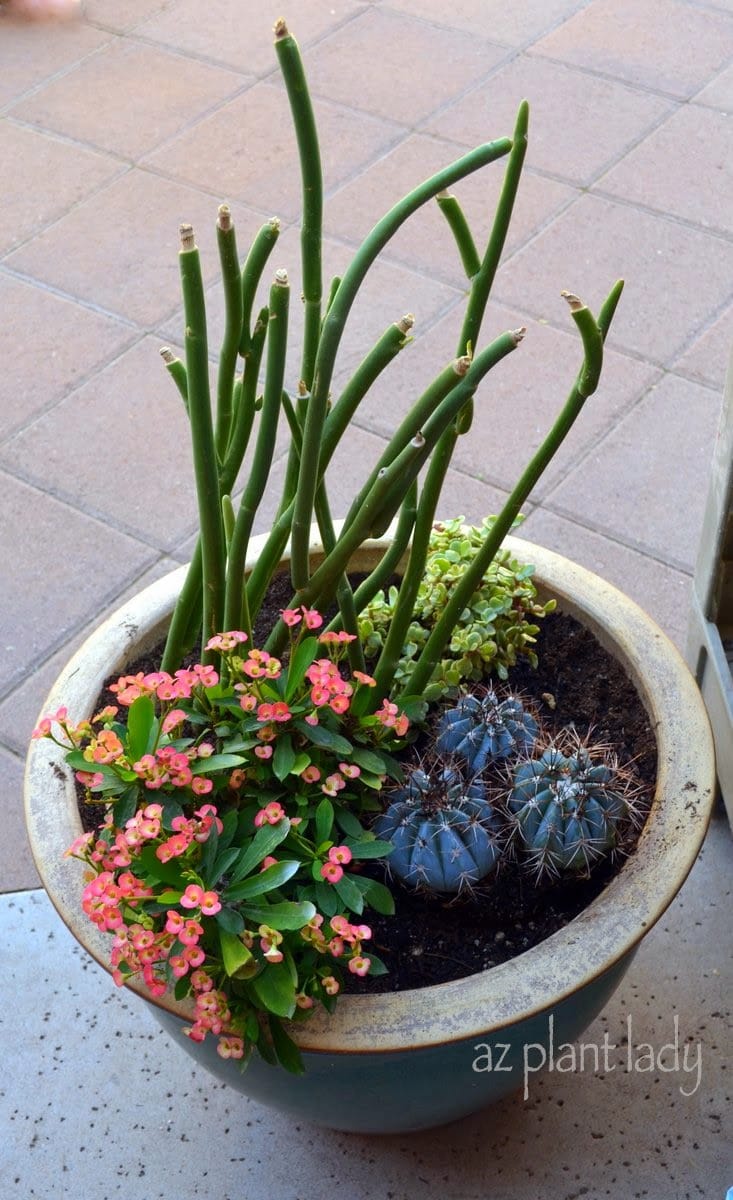
4. Low-Maintenance Succulents
For a fuss-free container gardening experience, consider planting cacti and succulents. These hardy desert dwellers not only flourish in pots but also require less water compared to their flowering counterparts.
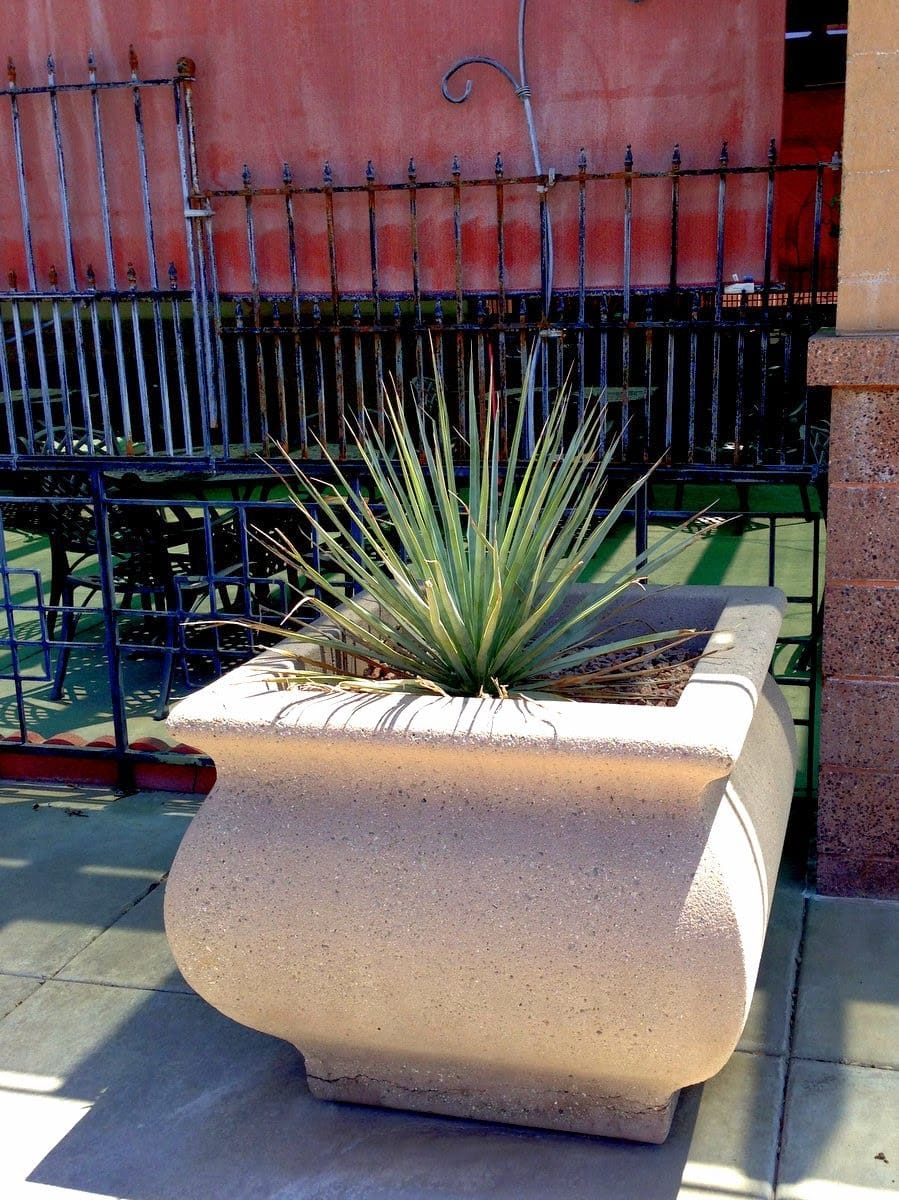
Desert Spoon (Dasylirion wheeleri).
Succulents are an excellent choice for planting in areas where water is not easily accessible. While they will need supplemental water, they don’t need water every day, making them a better choice for these areas.
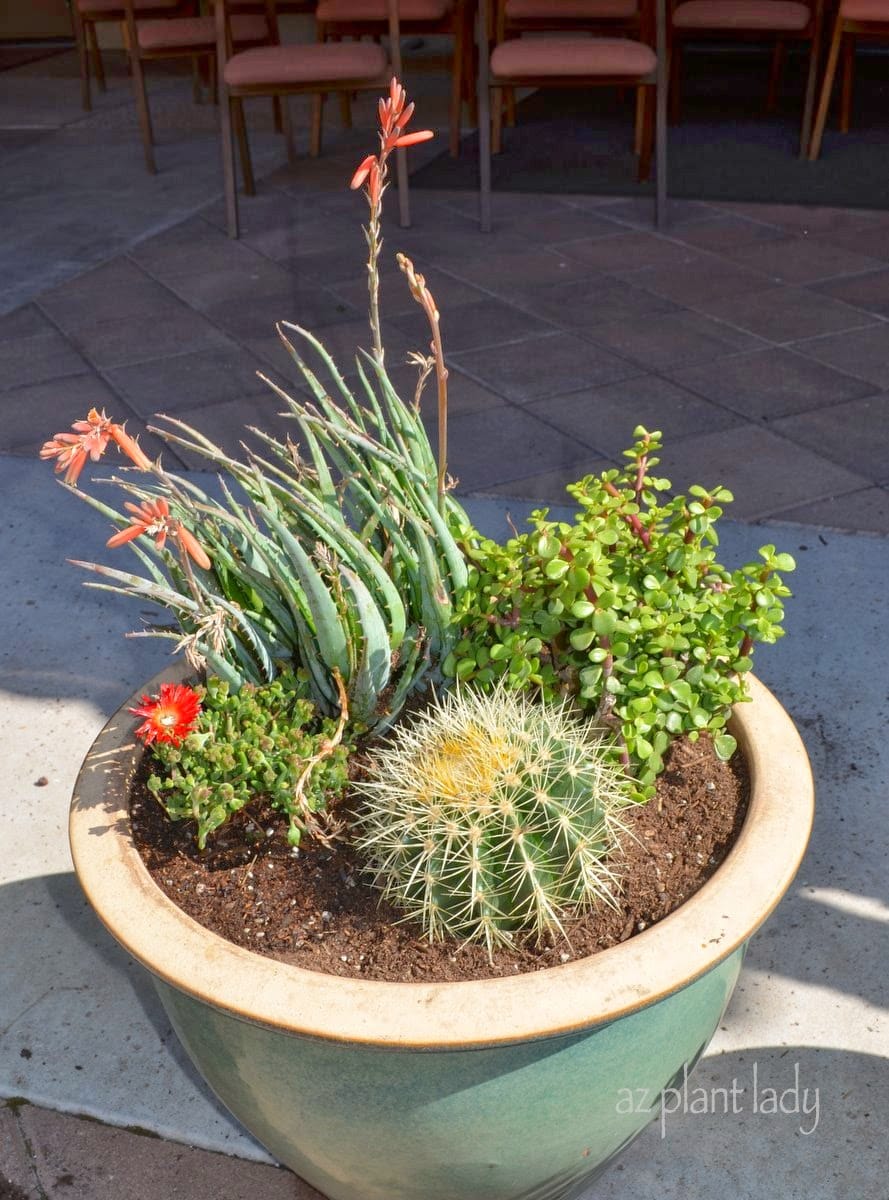
In general, succulents are lower-maintenance as well, so they are an excellent choice for the ‘fuss-free’ gardener.
Use a potting mix specially formulated for cactus & succulents, which will drain well.
Fertilize succulents spring through fall using a liquid or slow-release fertilizer at 1/2 the recommended strength.
*For more information on how to plant succulents in containers, including how to do it without getting pricked, click here.
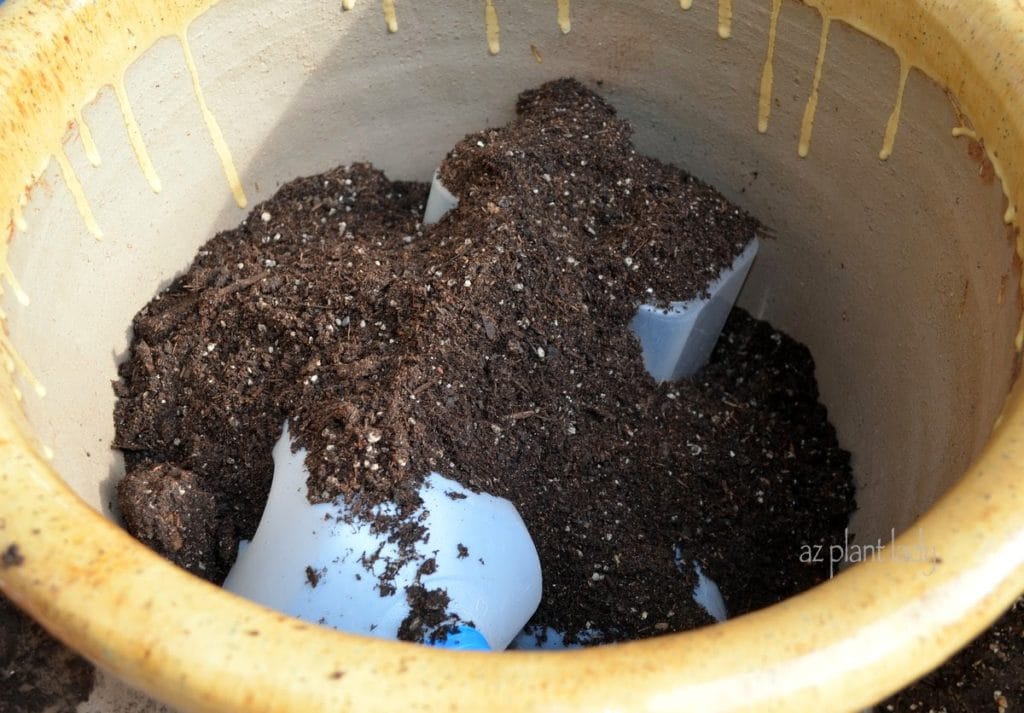
5. Space-Saving Strategies
Let’s face it – the potting mix is expensive and makes your pots very heavy. If you have a large pot, your plant’s roots most likely will never reach the bottom – so why waste soil where you don’t need it?
Fill up the unused space with recycled plastic containers and then add your potting mix. You will save money, AND your container will be much lighter as well.
Best Tips for Successful Container Gardening
To ensure your container garden thrives, follow these essential tips:
- Use a potting mix specially formulated for containers to maintain optimal moisture levels.
- Regularly fertilize your container plants with a suitable fertilizer.
- Choose a potting mix tailored for cacti and succulents when growing these drought-resistant plants.
- Consider supplementing water with succulents in arid areas.
- For more information on succulent container gardening, click here.
Reimagine Your Desert Garden with Containers
Whether you’re a gardening novice or a seasoned pro, container gardening offers boundless opportunities to transform your outdoor space. Explore the beauty of diverse plantings, experiment with colors, and embrace the practicality of edible container gardens. By reimagining what you can do in a container, you’ll breathe new life into your desert garden this spring.


